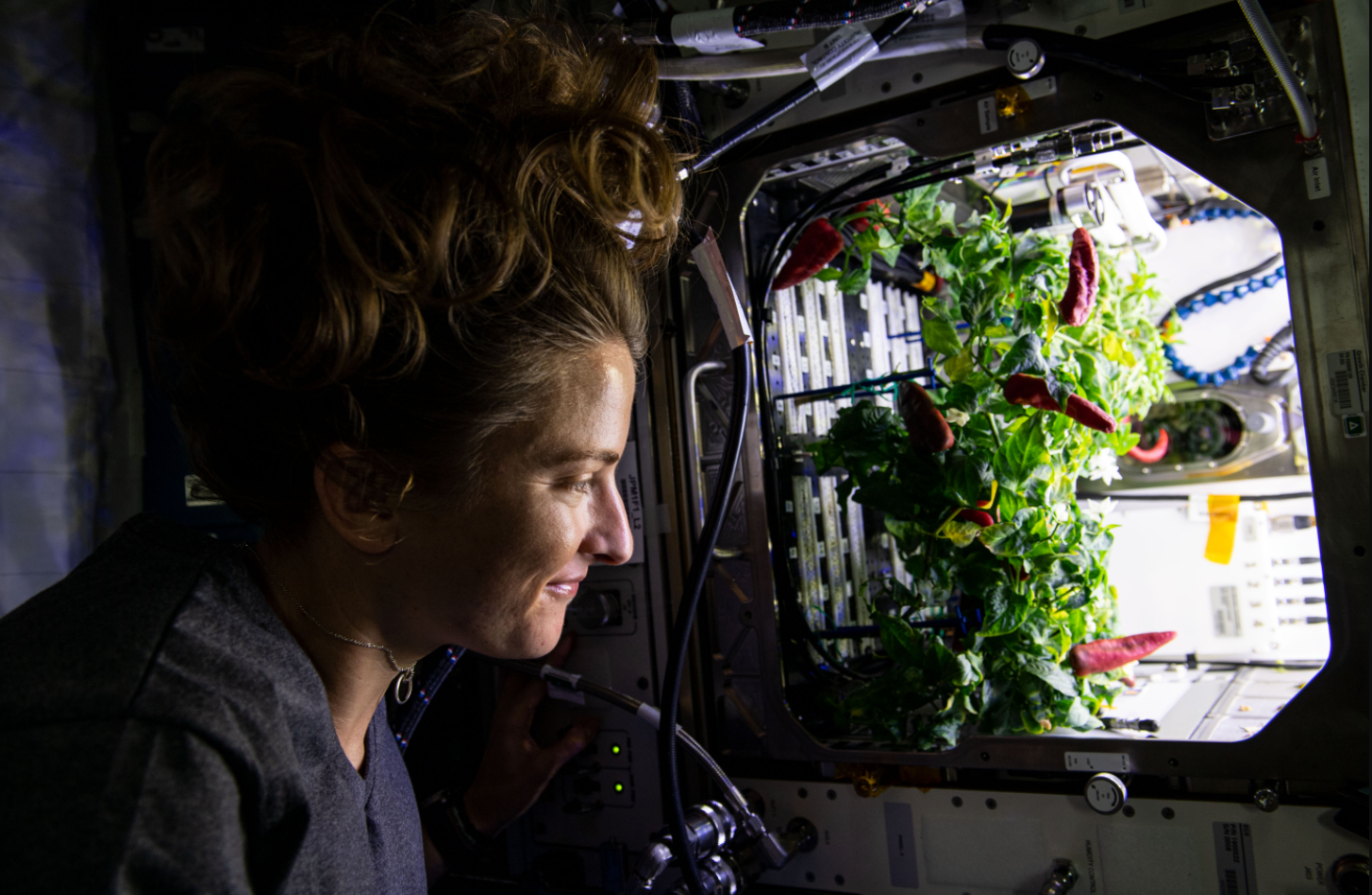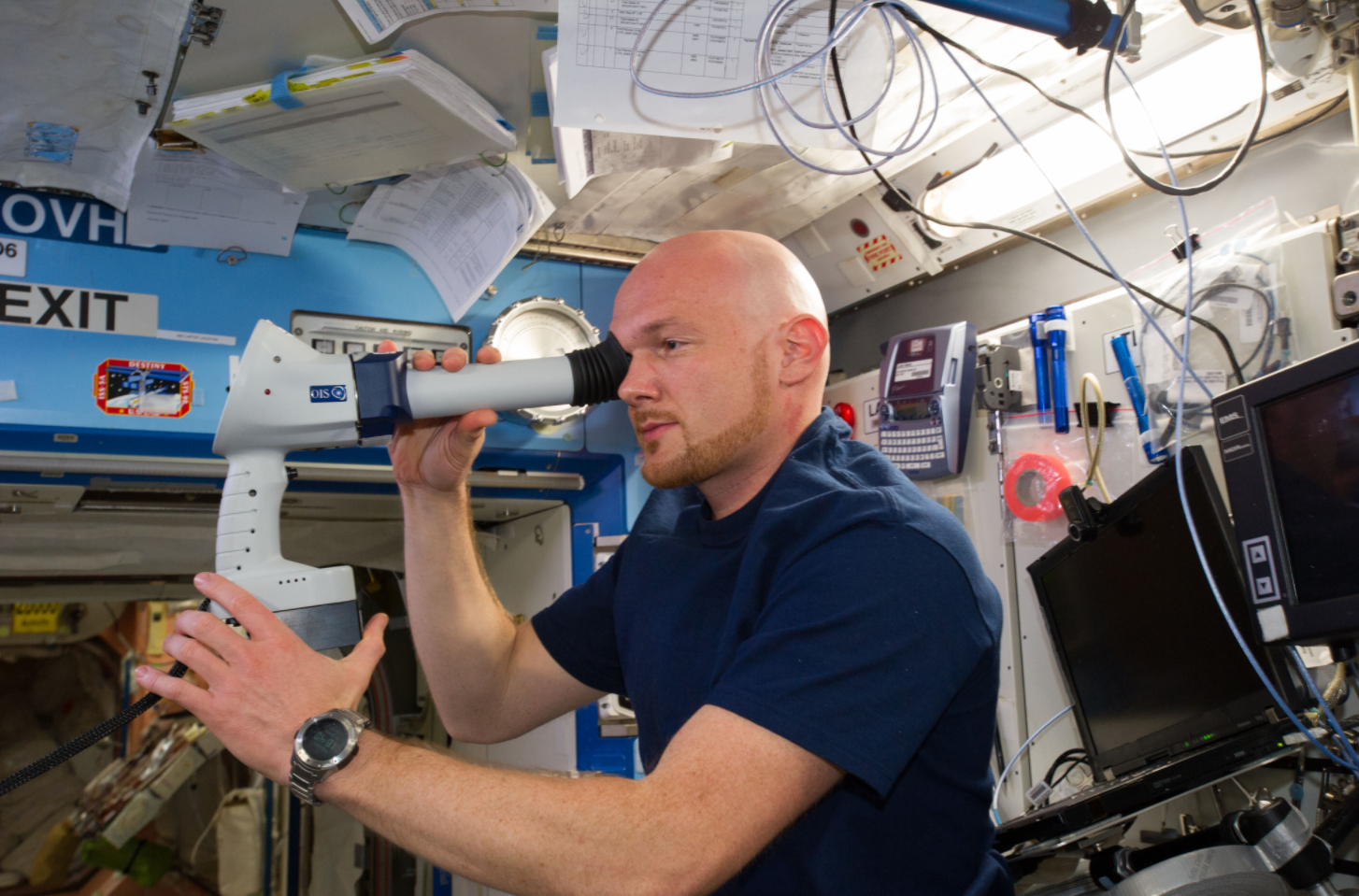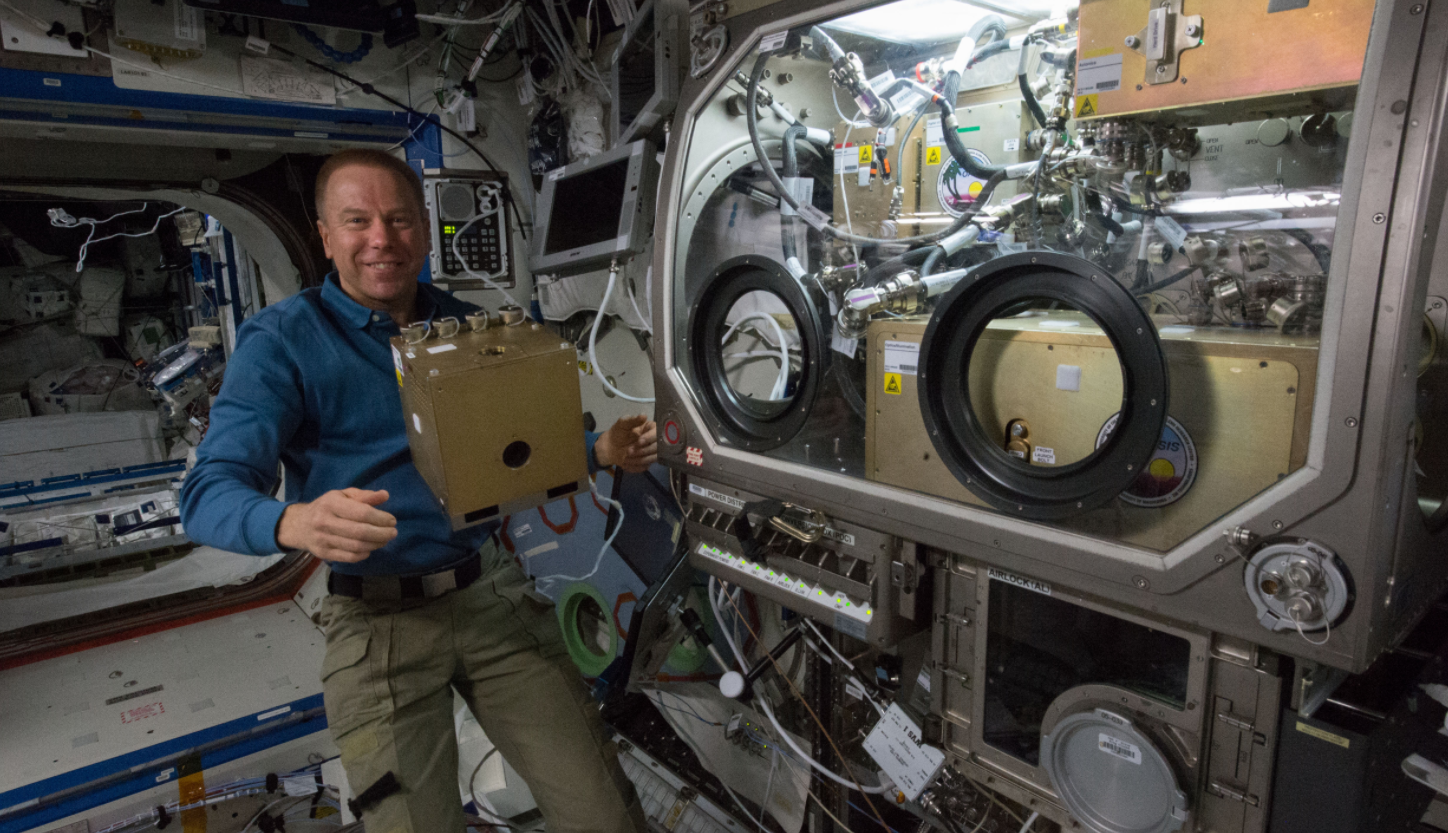Station Science Top News: Dec. 2, 2021
The longest plant experiment in the history of the International Space Station, Plant Habitat-04 (PH-04), concluded recently — 137 days after it began. This research helps to enable viable and sustainable crop production for future missions as people explore the Moon and Mars.
The crew sampled some of the 26 chile peppers grown from four plants in the orbiting laboratory’s Advanced Plant Habitat (APH). PH-04 also broke the record for feeding the most astronauts from a crop grown in space. Scientists have already seen two differences between space station and Earth-grown chiles:
- The peppers’ germination was delayed by about two weeks.
- The stems connecting the flowers and fruit were completely straight in microgravity, rather than curved as they are on Earth.
After the success of PH-04, the next planned edible crop experiments include growing dwarf tomatoes and testing new types of leafy greens.

Astronaut Kayla Barron observes the Hatch Chile harvest aboard the space station. Credits: NASA
***
A recent station study, CORM, found that antioxidant Coenzyme Q10 lessened damage to retina cells exposed to microgravity and space radiation. These results could help with the development of treatments for Spaceflight-Associated Neuro-ocular Syndrome, or SANS, which negatively affects the vision of approximately 70% of crew members.
Results from the NASA and the Italian Space Agency study found that after three days aboard station, human retinal cells displayed alterations to the vimentin network, which helps cells maintain their shape and organization. Numerous gene-expression pathways involved in metabolism, protein processing, and cell aging were also affected. However, fewer pathways were impacted in cells treated with Coenzyme Q10, indicating the potential benefit of the antioxidant to help retina cells resist damage.
Learn more about space station vision research.

Flight Engineer Alexander Gerst uses the fundoscope during an ocular health exam aboard the orbiting laboratory. Credits: NASA
***
The NASA study OASIS provided insights into the behavior of liquid crystals in microgravity, including their overall motion and how droplets organize themselves within films. Understanding how liquid crystals behave aboard station could help researchers design liquid crystal displays, or LCDs, that perform better in space.
OASIS researchers analyzed the properties of self-organizing droplets embedded in a specialized liquid crystal film bubble. In contrast to other types of films, researchers observed that the droplets form 2D hexagonal patterns that sheared and reappeared over time when they were moved. Liquid crystals are used for display screens like televisions and can also occur in soaps and cell membranes. Therefore, in addition to helping develop a theory explaining the stability of this hexagonal structure, this research can advance the use of these displays in space, potentially even within spacesuit helmets.

NASA astronaut Tim Kopra stows hardware from the OASIS experiment aboard the International Space Station. OASIS, which stands for Observation and Analysis of Smectic Islands In Space, studies the unique behavior of liquid crystals in microgravity. Credits: NASA







